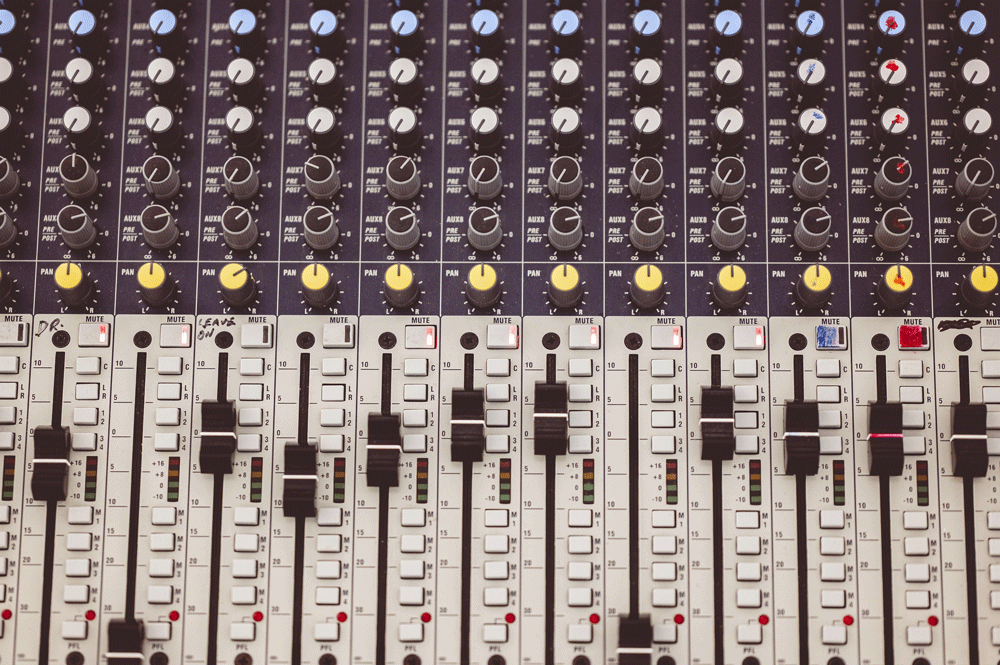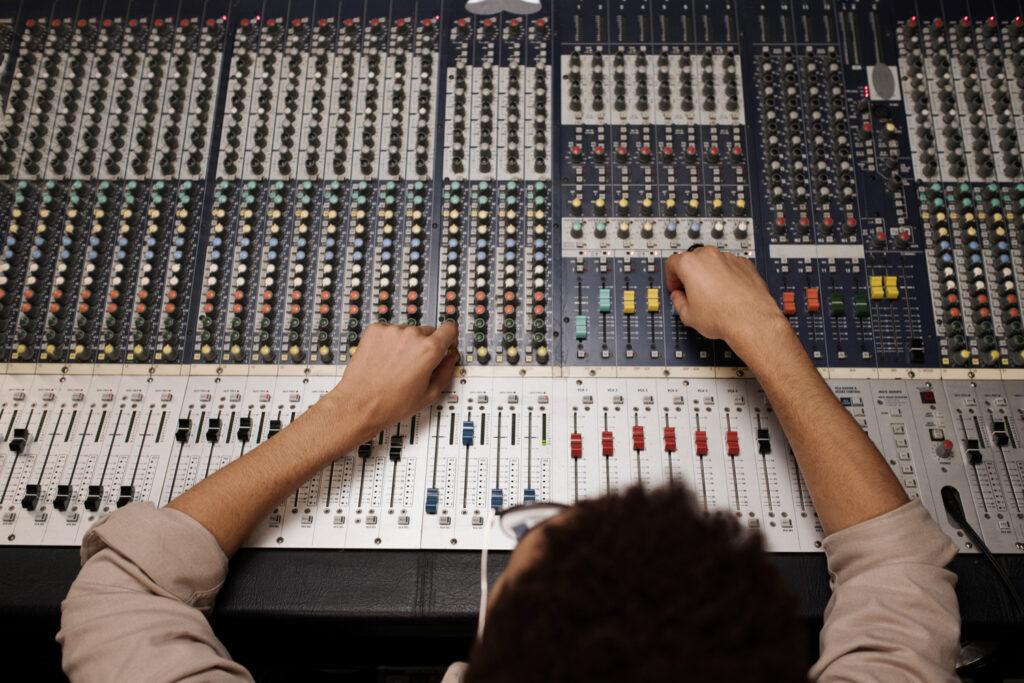A transient occurs at the beginning of a sound wave or a sample as a short but powerful amplitude spike of the wave. It doesn’t have a specific frequency, however, it does contain more of high frequencies.
What are transients and why are they important for music production, mixing, and mastering? In this article, we’ll answer these and other questions, and describe the role of a sound wave transient in music production, so keep reading.
How do you locate transients
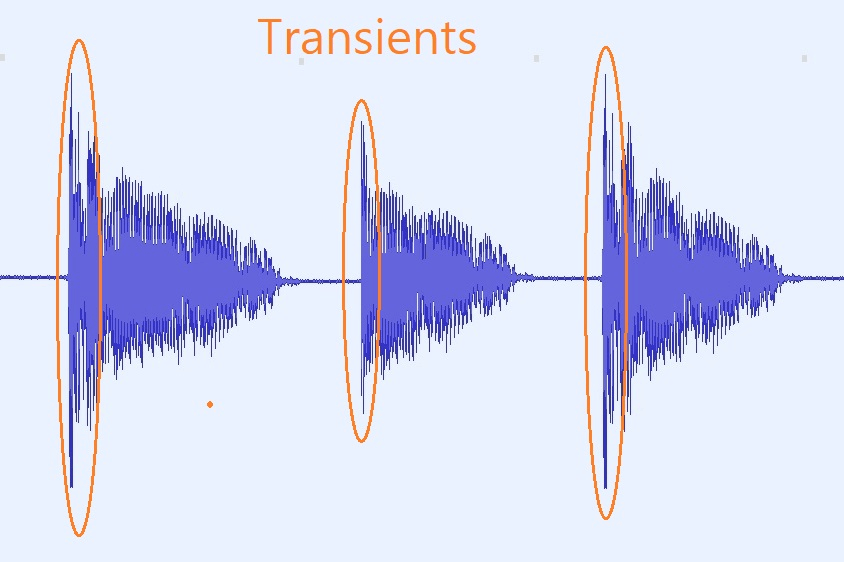 When you hit a piano key, strike a guitar string, or hit a snare drum, or other instruments, the sound will begin with a transient. Transient is a strike of the note, we hear it in the audio signal as a sudden attack of a signal before we actually recognize the note.
When you hit a piano key, strike a guitar string, or hit a snare drum, or other instruments, the sound will begin with a transient. Transient is a strike of the note, we hear it in the audio signal as a sudden attack of a signal before we actually recognize the note.
A transient does not carry a specific note, they are more of a loud strike, a short burst of energy the main part of which can usually be found in the mid-high and high frequencies, even if the instrument belongs to the low-end, like a bass guitar, for example.
When we say that they are short, we mean around 20 ms. Nevertheless, they can be 10 or more dB louder than the main part of the wave. That’s how they greatly affect the dynamic range of the song, however, if only short transients build the dynamics, the listener will not appreciate it, and the song will be not loud enough.
We need to control the peaks, making the song loud and dynamic at the same time.
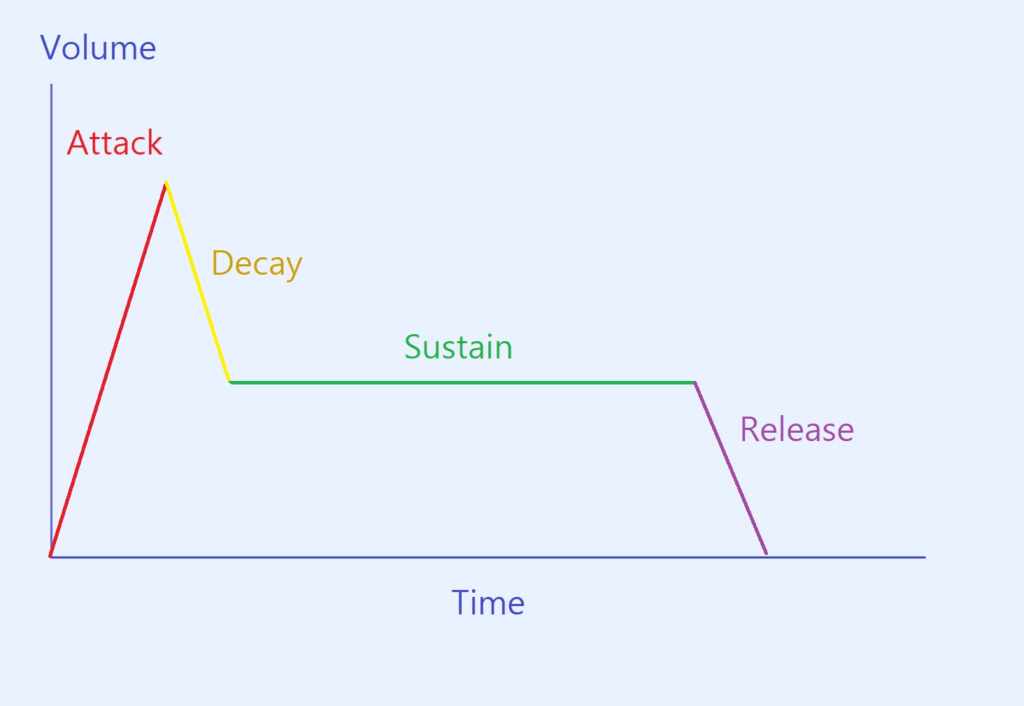 ADSR envelope
ADSR envelope
After transient strikes, it decays, and then, depending on how long the sustain works, the main body of the sound lasts, until it fades out with the release part. The perceived loudness of the sound depends on the sustained volume, not the loud spike of a transient.
This form of dividing a sound wave into main parts by volume is called the ADSR envelope. ADSR can describe the change of volume of a sound wave pretty well and is widely used in production, sound design, and editing sounds.
Using plugins that allow you to manage the ADSR parameters of a sound wave, you can shape the transient part of the wave as you like.
Role of transients in a song
Transients play a very important role in songs. As opposed to fade-in sounds that may occur in the background of the musical composition, sounds with transients hold the melody. The transients’ strikes form the rhythm of the song, even though they are short and we almost don’t hear them consciously, they are basically what makes us nod our heads with the beat.
The transient helps the instrument cut through the mix and sound more powerful. If you attenuate transients too much, the drums will become weak and the track will sound mushy.
However, the peaks in the sound waves are mainly formed with transients. As modern songs are mixed and mastered extremely loud, these peaks have to be removed, otherwise, the mix will never be able to reach the needed LUFS or RMS level without clipping, and will sound too quiet in playlists.
Transients are extremely important in mixing. If you handle transients creatively, it can work wonders for a song. Correctly amplified transient parts can make an instrument sound more expressive, clearer, and stand out in the mix. Properly enhanced transients can even make the mix seem wider. That’s why, for many instruments, like guitar or piano, audio engineers would want to emphasize transients.
Mixing transients
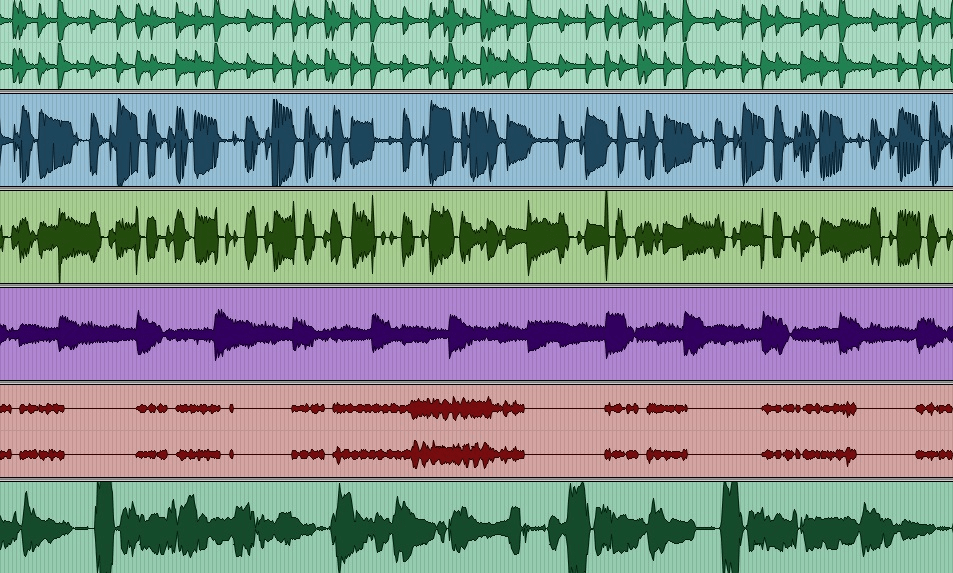 As transients become bigger, an audio engineer needs to deal with them gently in order to preserve their energy and expressiveness and at the same time bring the average loudness up. With processing, you’ll need to avoid distortion, avoid cutting peaks and receiving a weak mix.
As transients become bigger, an audio engineer needs to deal with them gently in order to preserve their energy and expressiveness and at the same time bring the average loudness up. With processing, you’ll need to avoid distortion, avoid cutting peaks and receiving a weak mix.
That’s why you can’t use just one limiter to control transients and expect good music as a result. Lowering the limiting threshold too much will spoil the transients, leave them without energy and the song will lose its rhythmic strikes. The whole mix will become one smooth chain of sounds without a rhythmical punch, not interesting.
Peaks are controlled by a professional mix engineer using a combination of plugins:
- compression,
- dynamic EQ,
- limiter,
- saturation, and other plugins.
- Also, special plugins called transient shapers can be used.
All these plugins affect transients. Processing with saturation will also add harmonic content to them.
Compression and transients
To control transients in the tracks using compression, you need to play with attack and release times. A short attack will help include the transient in the compressed material. The compression release time may also be short for the kick drum or snare drum. Longer release time will work great on instruments with sustain, such as piano or bass guitar, for example.
To affect transients more creatively, and preserve the initial strike of the sound making it punchier at the same time, an audio engineer would use parallel compression processing.
Multiband compression is also effective to locate and manipulate transients. This is possible because you can determine the main frequency band of the peak. As we said earlier, usually it’s located in the mid-high or high part of the spectrum, not in the low end.
The use of EQ
You can locate the frequency band of the transient and use a dynamic EQ to attenuate or expand transients.
Transient shaping tools
Transient shaping tools (transient processors) are special plugins that allow you to change the form of the transients. They can automatically recognize transients in a sound wave and work with them.
Transient processor plugins usually have Attack and Decay parameters that allow shaping the sound wave.
Multiband transient processors give you the freedom to affect only the needed part of the frequency spectrum working with transients.
Transient shapers can help tame transients, but they can enhance them as well.
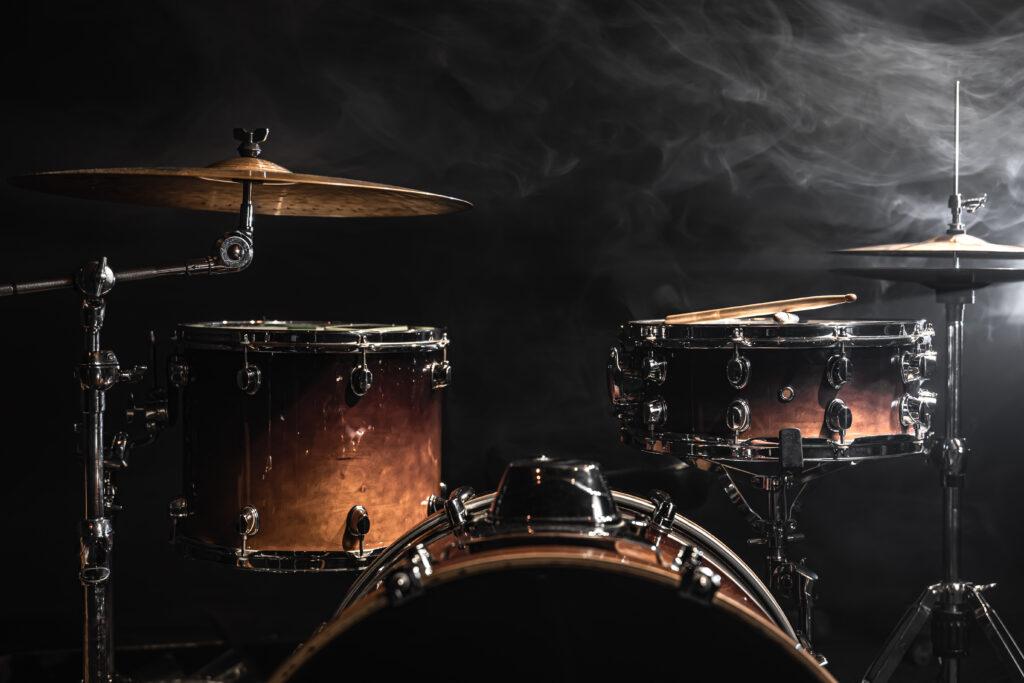
Transients of kick and snare drum, and other percussions
The first thing that comes to mind when talking about a transient in audio is drums. When the drum is hit, the strike results in a high-amplitude wave immediately.
The transient parts of the drum’s sound wave create the rhythm, so we need to preserve them, and at the same time we need to tame the peaks. Parallel compression will help with that a lot. In some genres like electronic music, for example, producers often try to expand drum transients to reach the most punchy sound.
Fast attack and fast release compressor settings will help control transients of a kick or snare drum. We need to quickly release the compressor so it will be ready to catch another strike of the drum.
 Transients in vocal
Transients in vocal
A special case of transients in a mix is the consonants pronounced by an artist when singing a song. Some consonant sounds like k, b, p and others create high spikes in sound waves.
Pop filters are used during the audio recording process with the exact purpose to filter those transients out, but they usually can’t catch all the spikes of audio wave energy.
A mix engineer will need to control the spikes of the wave properly to make the speech clear.
Transient response
 Audio engineers pay attention to the reproduction of transients in the equipment. This means how the piece of gear reacts to transients or reproduces them.
Audio engineers pay attention to the reproduction of transients in the equipment. This means how the piece of gear reacts to transients or reproduces them.
Faster transient response in speakers or headphones results in better sound quality. However, in microphones, a bit slower reaction to transients sometimes can be useful and result in a warmer vocal recording, for example.
However, when recording, engineers want to catch the transients properly, because they are crucial for the sound of many musical instruments, for example, guitars, violins, and others.
For recording engineers, transients represent a challenge, because when not recorded properly, they may go out of the volume limit and clip. Clipping will spoil the recorded material.
From our experience
If you are wondering what are transients and how to shape them in your mix, you probably will not be able to mix them perfectly by yourself.
As we explained in this article, the correct shaping of transients in your mix directly affects the rhythm, width, loudness, and how the instruments cut through the mix. The very groove of a song is created with the help of correct transient shaping.
In our Major Mixing mixing and mastering studio we’ve seen how bad transient shaping can be and how it could ruin tracks. We’ve had a lot of orders to mix and correct those mistakes.
If you want your song to be mixed and mastered in such a way that it can compete on Spotify, Apple Music, and other platforms, don’t hesitate to contact us. We’ll be happy to bring your music to the industry level and help you succeed in the music world.






